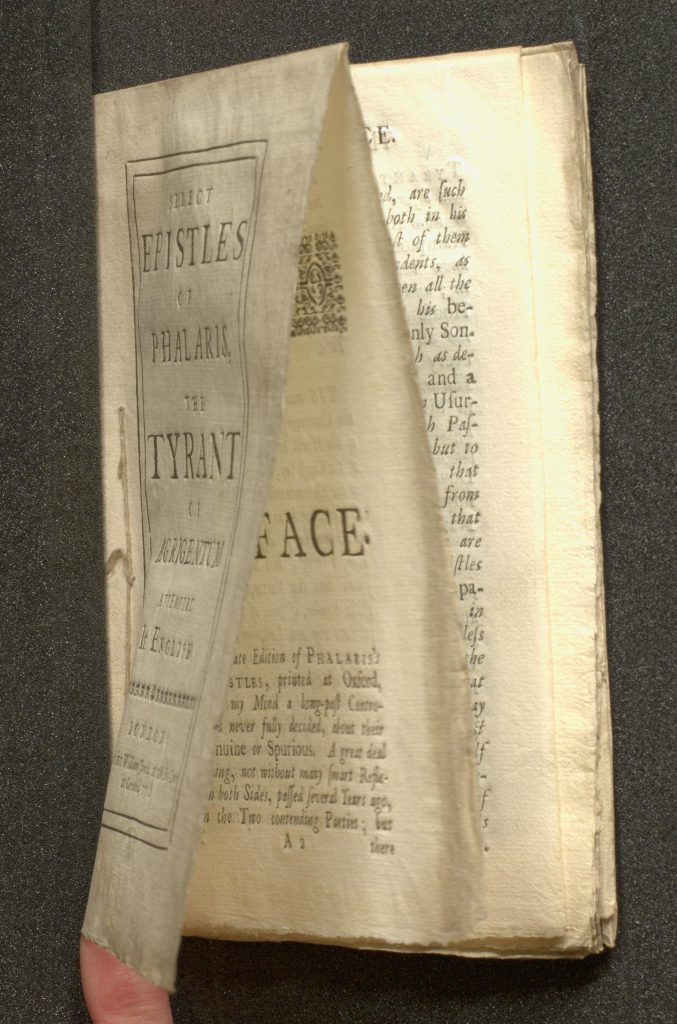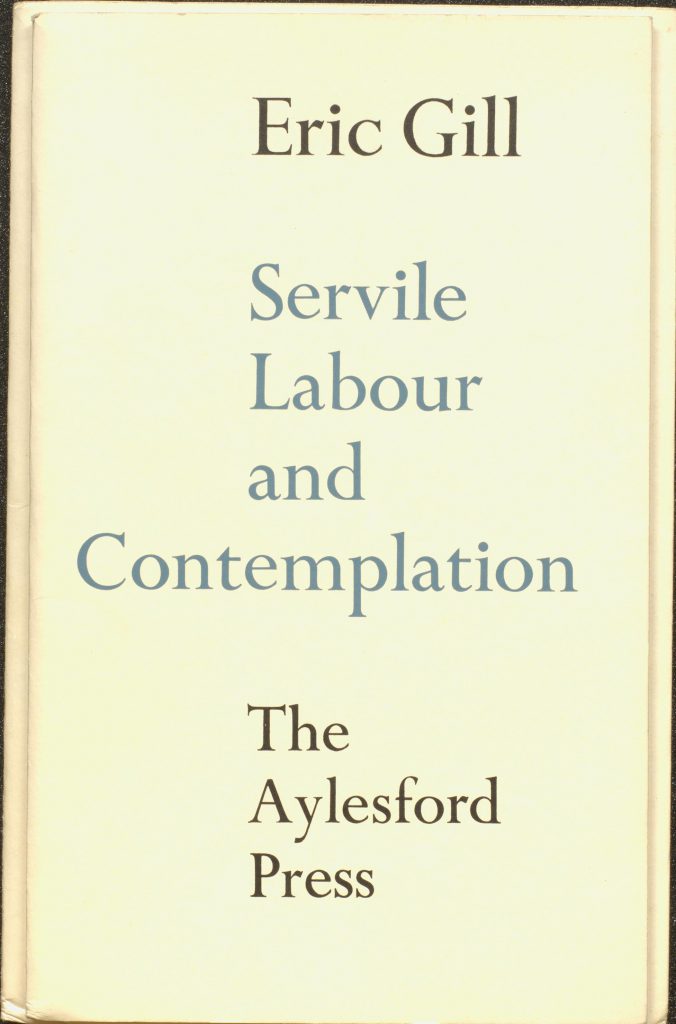Unopened books or pamphlets are unreadable until the top and front edges of the folded and bound or unbound gatherings have been sliced through to separate the individual leaves (see our earlier post on format).
SCA has an example of a book which has remained unopened for over 300 years: SPEC J10.1(14). But fortunately the digitized copy from Eighteenth Century Collections Online gives access to the text.

Uncut may be used by the unwary cataloguer when the term unopened would be more accurate: uncut has the specific bibliographical meaning that the book has survived with the rough edges (deckle edges) of its pages untrimmed by bookbinders. This makes it easier to see many kinds of bibliographical evidence about the book’s production. Uncut or untrimmed pages are unusual, since books were issued unbound, or in a temporary binding for the purchaser to have bound up to the mid 19th-century development of the publisher’s binding.
A modern example of a book showing the edges of the handmade sheet of paper is SPEC Zaina E.73 no.5 – the difference from the trimmed copy at SPEC Zaina E.73 no.195 is clear when they are side-by-side.

Uncut copies of a book also have the virtue of retaining all of the text and any later annotations, which are often lost when the page edges are trimmed or cropped in the process of binding and rebinding, successively reducing the margins. Untrimmed copies may be described as ‘tall copies’, to differentiate them from copies printed on larger sheets of paper (large paper copies’). The difference in size can be seen by placing the trimmed copy of SPEC Zaina E.73 on top of the untrimmed copy.

Still unsure? The Folger Shakespeare Library blog, The Collation, recommends using untrimmed instead of uncut and explains why in their blog post Uncut, unopened, untrimmed, uh-oh